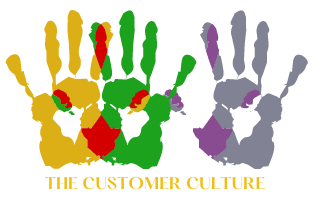In today’s dynamic business landscape, understanding and effectively navigating the customer journey is essential for success. From the initial spark of awareness to the ultimate goal of advocacy, each stage presents unique opportunities for businesses to engage with their customers and foster lasting relationships. In this blog post, we’ll delve into the various stages of the customer journey and explore strategies for businesses to drive positive outcomes at every step of the way.
Stage 1: Awareness
- At the awareness stage, customers become acquainted with a business or its products/services. Whether through marketing efforts, word-of-mouth, or online research, customers start to recognize a need or desire that your business can fulfill. To effectively engage customers at this stage:
- Invest in targeted marketing campaigns to raise brand awareness.
- Utilize social media, content marketing, and SEO to increase visibility.
- Offer valuable and informative content to educate potential customers about your offerings.
Stage 2: Consideration
- During the consideration stage, customers evaluate their options and weigh the pros and cons of different solutions. Businesses must position themselves as viable choices and provide compelling reasons for customers to choose them. To engage customers during consideration:
- Highlight unique selling points and competitive advantages.
- Provide personalized recommendations and tailored solutions.
- Offer incentives such as discounts or free trials to encourage conversion.
Stage 3: Decision
- At the decision stage, customers are ready to make a purchase or commitment. Businesses must make the buying process as seamless and frictionless as possible to encourage conversion. To facilitate decision-making:
- Optimize the user experience across all touchpoints, including websites, mobile apps, and customer service channels.
- Provide transparent pricing, shipping options, and return policies.
- Offer reassurance through customer testimonials, reviews, and guarantees.
Stage 4: Post-Purchase Experience
- The post-purchase experience is critical for customer satisfaction and loyalty. Businesses must continue to engage with customers after the sale to ensure a positive experience and encourage repeat business. To enhance the post-purchase experience:
- Send thank-you emails and follow-up communications to express appreciation.
- Provide ongoing support, assistance, and resources to help customers derive maximum value from their purchase.
- Encourage feedback and actively address any issues or concerns.
Stage 5: Advocacy
- At the advocacy stage, satisfied customers become brand advocates and willingly promote the business to others. These loyal advocates are invaluable assets and can significantly impact brand reputation and growth. To cultivate advocacy:
- Offer referral programs or incentives for customers who refer new business.
- Encourage user-generated content and social sharing.
- Provide exceptional customer service and consistently exceed expectations.
Finally, when navigating the customer journey from awareness to advocacy, it is a multifaceted process that requires strategic planning, continuous engagement, and a customer-centric approach. By understanding the unique needs and preferences of customers at each stage and implementing tailored strategies, businesses can drive positive outcomes, foster long-term relationships, and cultivate loyal advocates who champion their brand.
